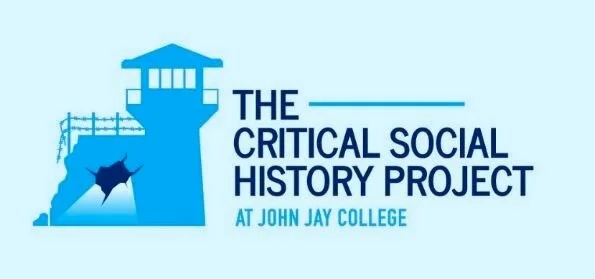Preserving Justice:
Historic Texts and the Foundations of Critical Criminology
The Critical Social History Project is home to the archive of the American Society of Criminology’s Critical Criminology and Social Justice Division. It is curated by Albert de la Tierra and Jayne Mooney. “Preserving Justice” collects and collates original materials that are of relevance to the development of critical criminology and the Division. The aim is to document the emergence of critical criminology, highlighting its intersectional qualities, and discussing its contemporary relevance by displaying pamphlets, records, books, articles and audio-visual material. An exhibition of this material is currently in the Sociology Department at John Jay College.
Radical ALTERNATIVES TO PRISON
Radical Alternatives to Prison (RAP) was set up in 1970 by a group of ex-prisoners and people connected with the prison service. RAP, a pressure and information group, called for the abolition of prison and aimed to research and propose alternatives to prison. It included a number of active local groups. RAP was supported by the charity Christian Action for a number of years from 1971. By 1987 RAP supported an end to prison building, the decriminalisation of certain offences, legislation to cut maximum offences and an end to imprisonment for minor offences.
ANARCHY journal
Anarchists were among the earliest modern thinkers to offer a systemic critique of criminal justice and among the first to directly criticize academic criminology while formulating a critical criminology. They identified the sources of social problems in social structures and relations of inequality and recognized that the institutions preferred by mainstream criminologists as would-be solutions to social problems were actually the causes or enablers of those harms in the first place.
Union of Radical Criminologists
In the summer of 1972, the Union of Radical Criminologists was formed by a small group of students and teachers at the Berkley School of Criminology. The URC with the expressed intention of becoming a hub of radical ideas and community based projects as well as for the support of the victims of academic repression. The URC played a role in the anthology “Policing in America” and in 1973 the URC and the North American Congress on Latin America jointly initiated the Center for Research on Criminal Justice.
Key Issues in Critical Criminology: A blog series
Critical criminology developed at a significant point in time - during the late 1960s and early 1970s. During this period of sociopolitical upheaval, young people became more aware of the impact of discrimination and the oppressive power of the state. Much of what is known today as critical criminology emerged from the civil rights, anti-war, anti Apartheid and feminist movements. Throughout all of these movements was the widespread questioning of ‘establishment’ views. The ideological roots of critical criminology stem from largely Marxist and neo-Marxist theories but also post colonial thought and critical race studies.
Critical criminology examines class, gender and race/ethnic biases and oppression in all of their ubiquitous forms. It not only critically examines what is, but also what might be, through placing a premium on developing insights into generating more humanistic social formations, institutions, interactions and forms of social justice. Today ‘critical criminology’ is best thought of as an “umbrella term”: ‘describing an intellectual space in which a broad variety of people could come together to think through issues related to power, crime and punishment’
Published monthly, the “Key Issues” blog series will select key issues from the collection of critical criminology journals within the archive, and locate the historical significance of the issues, themes and causes highlighted. Placing the analysis within the historical context of the time, and locate its impact on the field of critical criminology today this blog will delineate the trajectory of key themes within the field and their impact on scholarship today.



